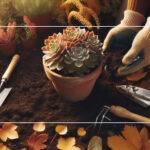Introduction to Sedum and Its Growing Needs
Welcome to the intriguing world of sedum, a beloved favorite of the succulent family. Known for its hardiness and ease of care, this diverse genus of plants adds texture and color to any garden or indoor space. Perhaps you’ve seen sedums peeking out from rockeries or proudly perched atop living walls, demonstrating their versatility and resilience.
With variants ranging from the ground-hugging ‘Dragon’s Blood’ to the upright and statuesque ‘Autumn Joy’, sedum plants offer a spectrum of forms, foliage, and flowers that capture the imagination. Novice gardeners and seasoned green thumbs alike revel in their ability to thrive in conditions that would challenge less adaptable species.
General growing requirements for sedum are refreshingly simple: well-draining soil, moderate watering, and good sunlight. These succulents are drought-tolerant troopers, storing water in their fleshy leaves to weather dry spells. They’re also champions of low maintenance, asking only for a sunny spot to bask in and the occasional drink. To get a closer look at how to care for these hardy plants, take a moment to enjoy this informative video.
Imagine walking through a garden where sedums join forces with a blend of mulches that not only complement their beauty but also replicate their native, well-drained habitats. Gardeners often pair them with organic mulches to help retain moisture and regulate soil temperature, creating an ideal environment for sedum to flourish. Seek further insights into the wonders of combining these resilient succulents with various garden elements for optimal growth.
Uncovering the Relationship Between Sedum and Mulch
Have you ever wondered if you could give your sedum plants an extra boost? Interestingly enough, the answer may lie within a layer of mulch. Let’s dig into the dynamic between these hardy succulents and the nurturing benefits of mulching.
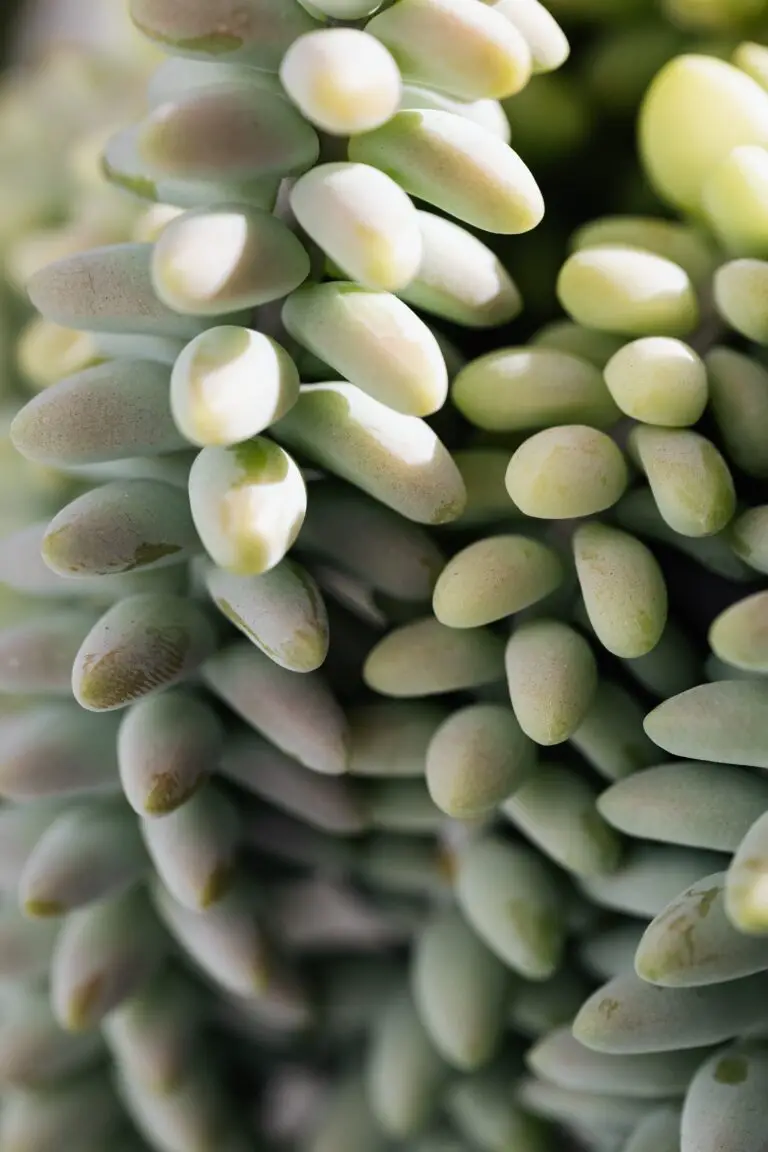
Mulch, a protective covering spread on the ground to conserve soil moisture and shield against temperature extremes, might just be the companion your sedum needs. It turns out that mulching offers a plethora of advantages, such as moisture retention and temperature regulation, which are critical factors for the well-being of sedum plants.
Let’s visualize a sedum plant nestled in a cozy bed of mulch. This isn’t just aesthetic gardening; it’s a strategic move. Mulch acts as a barrier, deterring pesky weeds that would otherwise compete with our succulent friends for nutrients and water. Moreover, during scorching summer days or chilly autumn evenings, the mulch serves as insulation, keeping the soil temperature around the sedum stable and conducive to growth.
However, it’s not all rosy in the mulch garden. There’s a fine line to tread, as over-mulching or using the wrong material could lead to excess moisture, and succulents like sedum detest soggy feet. Therefore, it’s imperative to choose a mulch that complements the drainage needs of these drought-tolerant plants.
For those eager to elevate their succulent gardening game, consider exploring further resources, such as care tips for thriving alpine succulents, which offer insights into the delicate balance of water, soil, and environmental factors critical to the health of these resilient plants.
In conclusion, incorporating mulch into your sedum garden can be a wise decision when done correctly. Think of mulch as the secret ingredient to a thriving sedum display—a touch of mulch might just be the difference between a sedum that survives and one that flourishes.
The Right Mulch for Your Sedum: Making the Best Choice
When it comes to giving your sedum that extra layer of love, mulch is a gardener’s best friend. But before you lay down just any old mulch, let’s dig into the world of options available to you. Different types of mulch can affect moisture, temperature regulation, and even pest control around your plants. So, what’s the best fit for your hardy succulent friends?
First off, let’s talk organic mulches. These are materials like shredded bark, straw, or leaf mold. They break down over time, enriching the soil with nutrients and improving its structure. Organic mulches help keep the soil cool and moist—a boon for sedums during those scorching summer months. While your sedum isn’t overly demanding, it does appreciate the consistent moisture levels that organic mulches can provide.
Inorganic mulches can also be a solid choice. Think pebbles, gravel, or even crushed stone. Sedum, being a succulent, adores a well-draining environment. These materials not only facilitate drainage but also reflect sunlight, helping to keep the root zone on the cooler side. Have you ever seen a sedum thriving amidst a rock garden? That’s inorganic mulch at its best!
Now, let’s consider cocoa hulls. They smell divine and offer a rich, dark color that makes the vibrant greens, reds, and purples of your sedum pop. But beware; they can be toxic to pets if ingested. If Fido or Kitty likes to dig around in the garden, it might be better to opt for a pet-safe alternative.
It’s a fine balance, isn’t it? You want to choose a mulch that conserves water yet allows for that ideal drainage. If you’re looking to dive deeper into mulching techniques, check out our guide to choosing suitable mulch for a comprehensive look at your options. But, to see mulching in action, let’s switch gears for a moment. Below is an insightful video on the art of mulching for sedum plants, giving you a visual guide to achieving that perfect sedum setup.
Choosing the right type of mulch for your sedum isn’t rocket science, but it does take a keen eye and a bit of research. Remember, what works for one garden may not work for another. Your sedum’s needs can vary based on local climate, the specific species, and even where it’s planted in your garden. It’s all about creating that ideal microclimate for your succulents to not just grow, but thrive.
So, when the gardening gloves come on and the mulch spreads out, think about what your sedum will love. After all, these aren’t just plants; they’re a part of your outdoor sanctuary. Provide them with the right mulch, and they’ll reward you with robust growth and a dazzling display of hardy beauty.
How to Properly Apply Mulch to Sedum Gardens
When it comes to creating a thriving sedum garden, the application of mulch is a game changer—much like finding the perfect fertilizer for your prize tomatoes. The goal is to strike that harmonious balance between retaining moisture and providing enough drainage to prevent rot. Let’s embark on a step-by-step journey to mulch your sedum gardens efficiently, ensuring they grow in mulch that complements their hardy nature.
First things first, choose your mulch wisely. While a plethora of mulch types beckon from the gardening aisles, organic mulches such as straw, shredded bark, or leaf mold are your heroes here. They not only break down over time to enrich the soil but also foster an environment conducive to helpful critters like earthworms.
Commence your mulching escapade in the spring when your sedum plants have emerged enough for you to discern their whereabouts. Clear away any debris and old, uncomposted materials to set the stage for a fresh, nutrient-rich blanket.
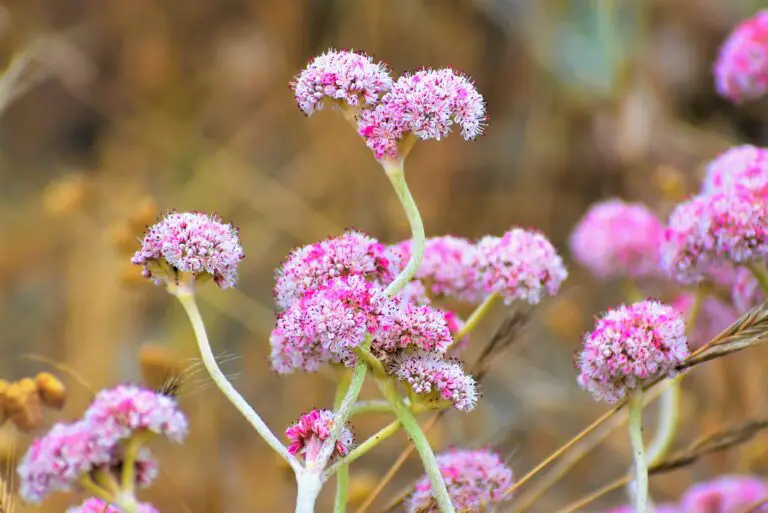
Apply the mulch in a layer approximately 2-3 inches thick. Imagine dressing your plants in a cozy sweater rather than a puffy winter coat; you want to cover the ground adequately without suffocating your plants. Navigate around the base of each sedum with care, leaving a small space to avoid rot and unwanted guests like slugs.
As you sprinkle the mulch over your garden, think of it as rain gently falling onto the earth. Distribute it evenly to avoid creating mulch mountains and valleys. These uneven landscapes could lead to water pooling—and in the same way you wouldn’t want water pooling on your newly polished hardwood floor, your sedums wouldn’t appreciate it either.
Remember, the sedum’s crown—the point where the stem meets the roots—should never be buried beneath the mulch. Treat it with the respect of a royal heirloom, ensuring it remains exposed to the sun’s warming rays and the whispers of fresh air.
Throughout the growing season, keep an eagle eye on the mulch’s thickness. Over time, it will begin to break down and settle, somewhat like how a well-loved sofa becomes more comfortable with use. Should the layer become too thin, feel free to top it off with a fresh batch, using the same principles of even distribution and respect for the crowns of your sedum plants.
A well-mulched sedum garden is not only a sight to behold but a thriving ecosystem that supports robust growth. With these steps, you can ensure your sedums will not only grow in mulch but truly flourish, painting a tapestry of succulent splendor in your garden.
The Impact of Mulch on Sedum’s Soil and Moisture
When considering the use of mulch in a garden, the question often arises: Can sedum grow in mulch? This hardy succulent has proven time and again that it’s not just a survivor but a bona fide thriver, even when faced with the challenges that mulch can bring to the soil it calls home. But how does this versatile plant manage to flourish in such conditions? Let’s dig into the gritty details.
Mulch, often composed of organic materials like wood chips, straw, or leaves, is a stalwart ally in the quest for hydration conservation. Its presence on the soil’s surface can drastically reduce the evaporation of precious water, ensuring that your sedum gets a consistent sip rather than a gulp-and-go. The regulating effect of mulch on soil moisture is nothing short of a lifeline for these drought-tolerant plants, particularly during scorching summers or dry spells.
But the relationship between sedum and mulch isn’t just a one-hit-wonder; it’s a duet that scores big on the soil quality charts as well. As organic mulch breaks down, it provides an encore of essential nutrients that seep into the soil, slowly releasing a symphony of fertility that encourages robust sedum growth. This process enriches the soil composition, enhancing its structure and providing a welcoming, nutrient-rich environment for sedum roots to spread their subterranean wings.
Consider the anecdote of a gardener who mulched her sedum bed with a thick layer of cocoa shell mulch. Initially skeptical, she witnessed her sedum not only adapt but thrive, their succulent leaves lush and vibrant, as the mulch moderated soil temperatures and contributed to a nutrient boom. It’s as if the sedum whispered into the ground, coaxing out its latent vitality, all thanks to the supportive role of the mulch.
Yet, like any good gardener will tell you, moderation is key. An excessive mulch layer can spell trouble for sedum, as it prefers its soil well-drained and not overly moist. To hit that sweet spot, a light mulch layer is the golden ticket, ensuring that soil stays airy and water can trickle down without turning sedum’s home into a swamp.
Here’s a visual treat that showcases the magic in action: watch as green thumbs masterfully marry mulch with the needs of their succulent companions, creating an oasis where sedum not only survives but stands tall, come rain or shine.
So, while mulch offers a suite of benefits that can enhance the environment for sedum, it’s clear that a careful approach is critical. It’s not just about dumping a blanket of mulch onto your flowerbed; it’s an art and a science, where understanding the nuances of soil moisture and nutrient exchange under the mulch layer is paramount. Adopting this strategy can undoubtedly help sedum plants not just make do, but make a statement in the garden with their resilient and regal presence.
Maximizing the Benefits: Mulch and Sedum Maintenance
Transforming your garden into a lush, low-maintenance haven starts with the dynamic duo of sedum and mulch. Sedum, a robust succulent, thrives amidst the protective embrace of mulch, but to keep this partnership flourishing, one must be savvy with maintenance strategies. Let’s dig in and unearth the secrets to a thriving mulched sedum bed.
First and foremost, water wise! Sedums are drought-tolerant warriors, yet their resilience doesn’t give you a free pass to neglect them. The key is infrequent but deep watering, ensuring water reaches the roots while encouraging them to grow deeper into the soil. Consider the weather; sedums demand less water during cool, damp months, and slightly more when the mercury rises. But, avoid overwatering—sedums don’t like soggy feet!
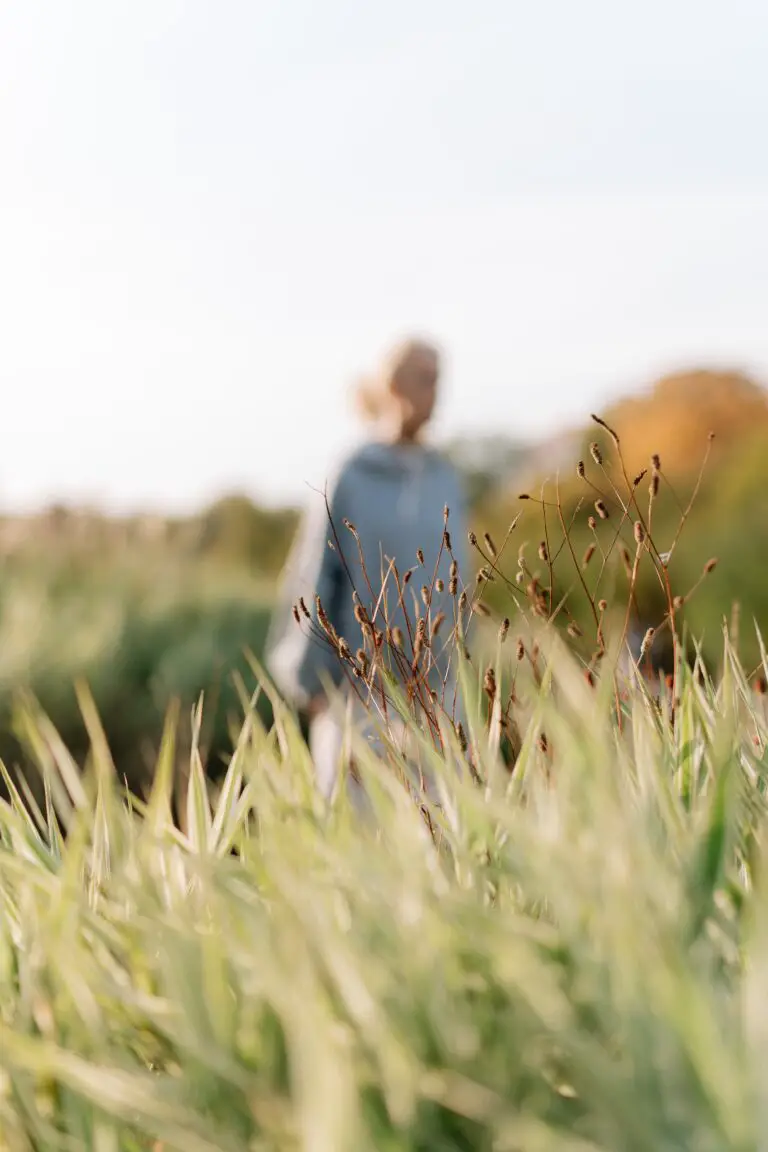
Mulch acts as a guardian against moisture loss, moderates soil temperature, and keeps weeds at bay. Yet, not all mulch is created equal when it comes to pampering your sedum. Opt for a coarse, well-draining material like pine bark or gravel. Fine, moisture-retentive mulches, on the other hand, could invite trouble like rot, particularly in winter. A layer just a couple of inches thick is the sweet spot, allowing for soil breathability and moisture retention without overwhelming the sedum.
Circle the seasons on your calendar, for it’s time for periodic mulch renewal. As organic mulches break down, they enrich the soil with nutrients—a boon for your sedum. Observing the lifecycle of the mulch helps you decide when to replenish. Typically, an annual refresh is in order, but let the condition of the mulch guide you. A good rule of thumb is to layer anew when the previous batch has decomposed by half.
Remember, a happy sedum is one that lives in harmony with its mulchy comrade. Ensuring you’ve got the watering technique down pat and timing your mulch renewals can turn your sedum bed into a thriving, self-reliant ecosystem. Embrace these tidbits of wisdom, and watch as your garden transforms with these hardy beauties taking center stage.
Common Pitfalls to Avoid When Mulching Sedums
Sedums, those resilient and vibrant succulents, bring a tapestry of color to any garden scape. But even the most tenacious plants can succumb to common mulching missteps. When you’re planning to nestle these hardy beauties into a cozy bed of mulch, steer clear of the traps that even seasoned gardeners might fall into.
Imagine for a moment, a sedum struggling to breathe beneath a heavy and sodden blanket of mulch. This often stems from the misconception that ‘more is better.’ In reality, sedums require a light touch with mulching materials. They thrive in well-draining soil and too much mulch, especially the moisture-retaining types like peat moss, can lead to root rot. A mulch layer just a couple of inches thick is more than ample to keep the weeds at bay while allowing the soil to breathe.
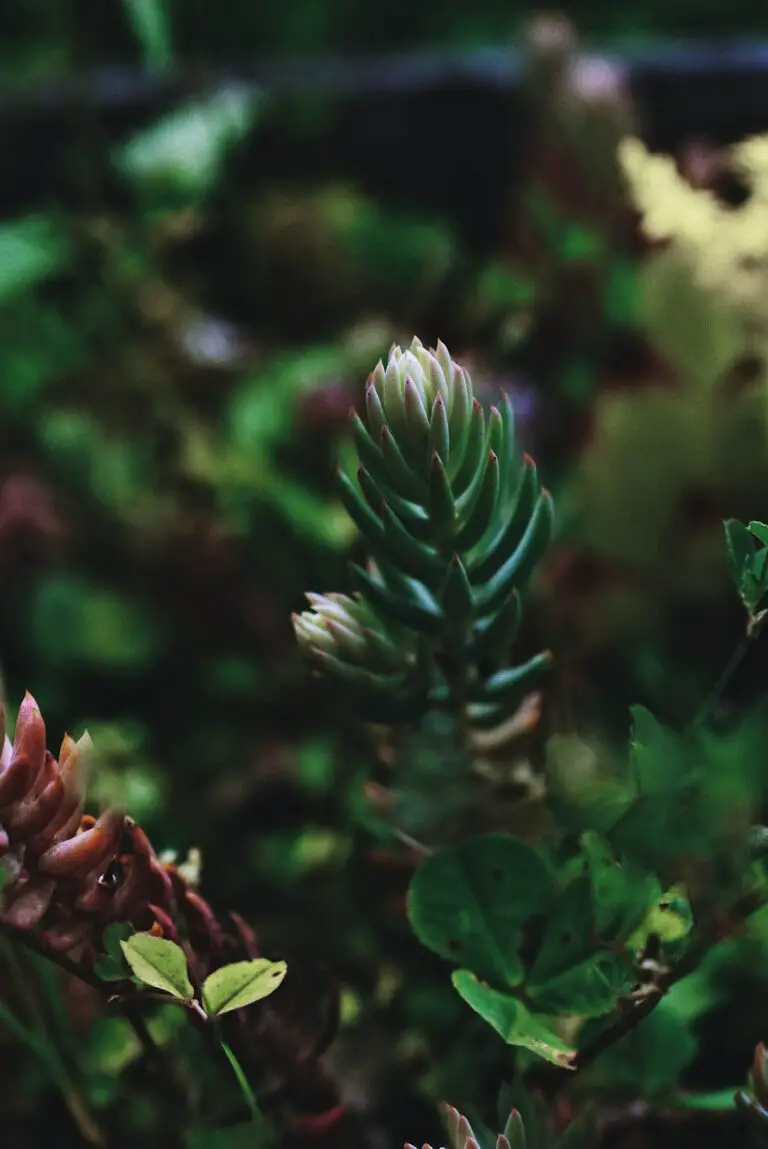
Another pitfall is using mulch that is too finely grained. Sedums love their space, and fine mulches can compact over time, reducing air flow to the soil and hindering drainage. Opt for chunkier mulch materials, such as straw or pine bark, which promote better air circulation and let water pass through smoothly, ensuring that the roots of your sedum stay dry and healthy.
It’s also worth noting that while mulch can be a sanctuary for your sedums, it can also harbor unwanted guests. A garden novice might overlook this, allowing pests to take refuge under the shield of mulch. Keep an eye out for signs of infestation and maintain a balanced mulch ecosystem to deter pests from turning your sedum patch into their new home.
Lastly, beware the allure of inorganic mulches when tending to your sedum sanctuary. While they may offer a certain aesthetic or perceived low-maintenance appeal, materials like rubber chips or stones can absorb and radiate heat, pushing the tolerance of even the most sun-loving sedums. Instead, favor organic mulches that help maintain a moderate soil temperature and reflect the natural habitat in which sedums flourish.
Let these insights be your gardening guide, and watch as your sedum flourish in a mulch environment tailored just for them. Avoid these common pitfalls, and your garden will be a vivid statement of health and vitality that only the robust sedum can provide.
Case Studies: Success Stories of Mulched Sedum Beds
Is it possible for the robust sedum plant, with its succulent leaves and star-shaped blooms, to coexist happily with mulch? Let’s delve into the real-life success stories that answer this query with a resounding ‘yes’. Gardeners and landscapers from various regions have demonstrated that not only can sedum grow in mulch, but it often thrives when paired with the right type of mulch.
Take, for instance, the story of a coastal Maine garden, where harsh winters and salt-laden winds can decimate less hardy species. Here, a bed of ‘Autumn Joy’ sedum stands lush and vibrant amidst a thick layer of cedar mulch. The mulch conserved soil moisture and protected the roots from extreme temperatures, ensuring year-round interest in the garden.
In a different scenario, a community garden in urban Minneapolis used pine needle mulch around their sedum collections. The slightly acidic nature of the pine needles proved to be an excellent match for the alkaline-heavy urban soil, balancing the pH levels and providing a sanctuary for sedums to flourish.
And it’s not just in the United States. A horticulturist in the United Kingdom reported fabulous results with a sedum roof installation, where the plants were set in a free-draining, organic compost mulch. The green roof displayed a beautiful tapestry of sedums, adaptable in their nutrient-poor but well-draining habitat, showcasing mulch as a key player in sustainable urban landscaping.
But what about hotter climates? In Arizona, a sun-drenched home garden used a fine gravel mulch to create a desert landscape with sedum as one of the signature plants. The gravel allowed water to percolate quickly to the roots while reflecting heat away from the plants, simulating the natural rocky habitats that many sedums call home.
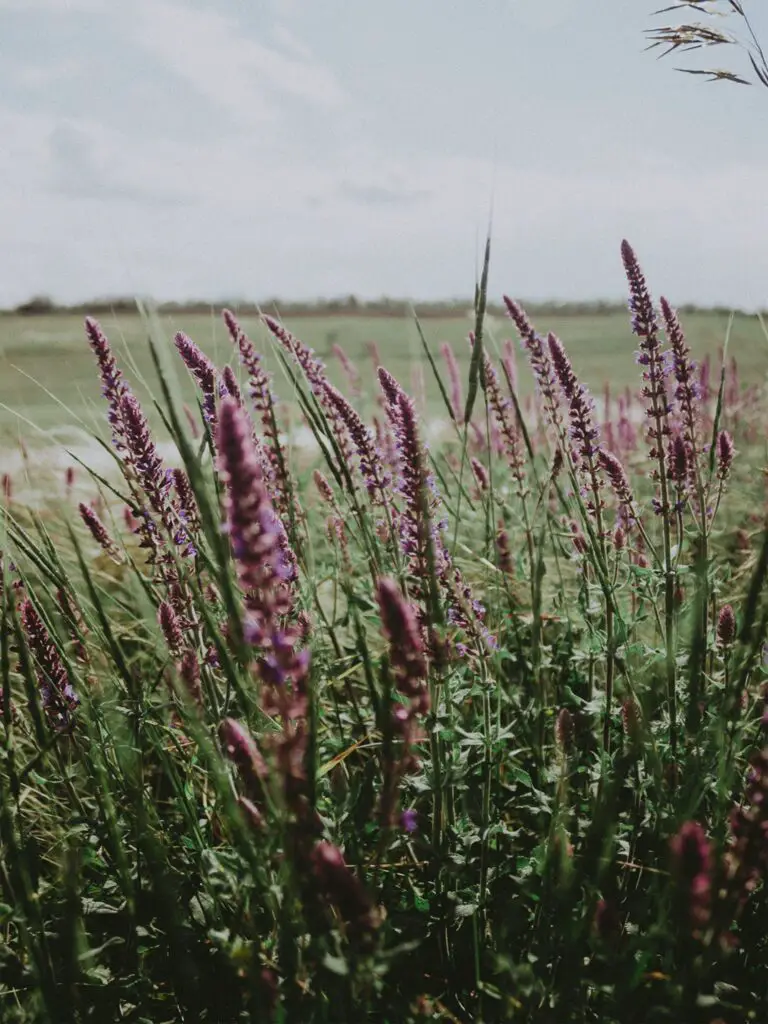
These are just a few snapshots of how mulching has successfully supported sedum growth in various environments. Whether it’s deterring pests, conserving moisture, or simply adding aesthetic appeal, mulch serves as an ally to sedums, promoting healthy, vigorous growth in gardens around the world. The trick lies in selecting the appropriate mulch material and ensuring that it complements the specific needs of the sedum species in question.
Frequently Asked Questions
Are you pondering the perks of mulching for your steadfast sedum companions? Pull up a chair, fellow green thumb, for we’re delving into the common curiosities surrounding sedums in the world of mulch. Not just any chit-chat, but a treasure trove of tips and real-life nuggets for your succulent success stories!
Just a Splash or a Soaking? Watering Sedum in Mulch
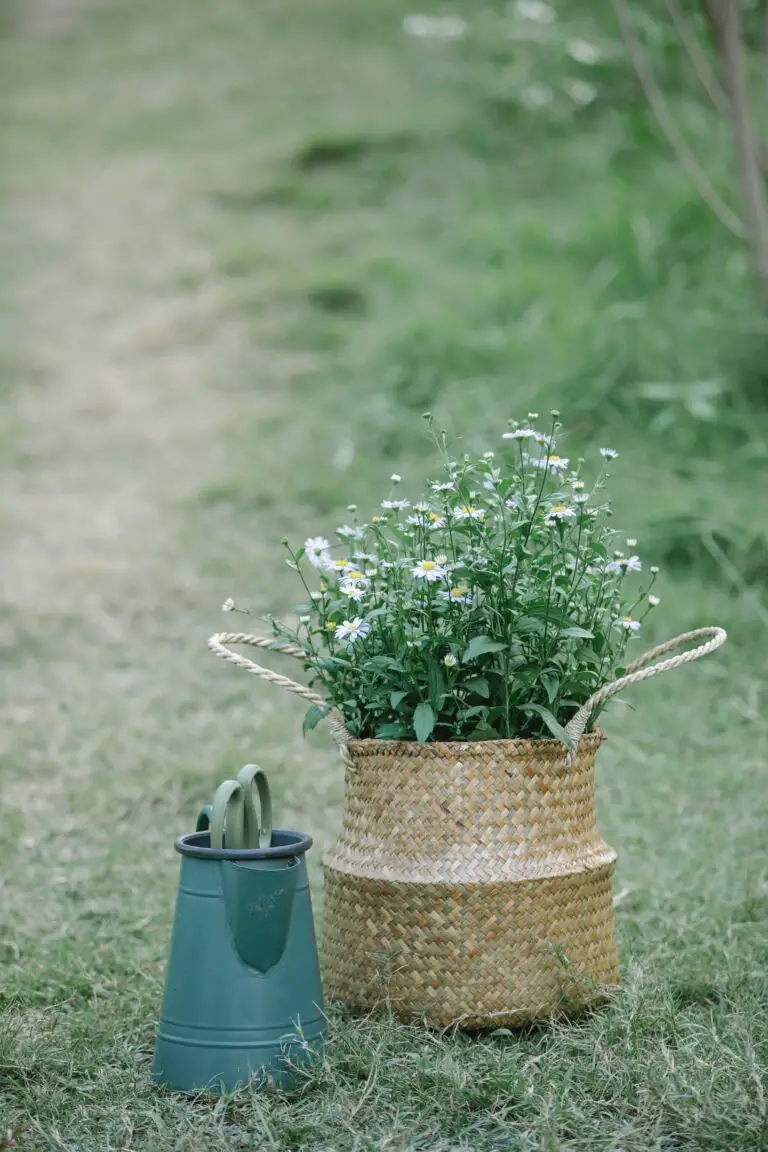
Imagine this scenario: The sun is beaming, the birds are chirping, and there you are, hose in hand, giving those sedums a gentle shower. The million-dollar question is, how often should this moment happen? Well, sedum plants, those sturdy wonders, prefer it on the dry side. When housed in mulch, they demand even less. Think of a light drizzle, just enough to quench their thirst—overwatering is a definite no-go as it can spell soggy disaster for these drought-loving darlings.
Seasonal Mulch Magic: Timing Your Mulch Routine
Here’s a scoop: The best time to mulch? Autumn! Picture this—a crisp fall day, leaves rustling, and you’re spreading a cozy blanket of mulch over your sedum bed. The reason is pure science; fall mulching helps insulate your plant’s roots as the temperature dips, providing a stable bed as they slumber through the winter. And as spring arrives, the mulch transitions into a moderating layer, keeping those root temperatures steady as the days grow warm.
Mulch Misfits: Types to Steer Clear Of
Not all mulches are created equal in the realm of sedum care. Let’s chat about which ones to give the cold shoulder. Rubber mulch? Give it a pass—it holds onto heat like a desert rock, which can push your heat-tolerant sedums to their limits. Dyed mulches can be troublesome too, seeping in unwanted chemicals that tick off the gentle balance of your soil. Stick with organic chums like straw or pine needles; they’re like that reliable friend who’s always got your back!
And there you have it, a quick dive into the frequently asked questions about sedum and mulch. Keep this advice in your gardening toolkit, and watch your sedums flourish in their mulched haven!



